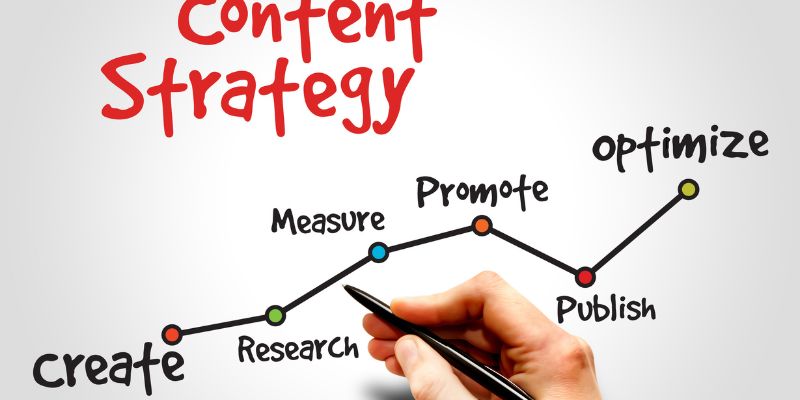
1. Understand Your Audience
Before you begin creating content, it's crucial to have a deep understanding of your target audience. Knowing who your potential customers are, their needs, preferences, and pain points allows you to create content that resonates with them.
- Create buyer personas: A buyer persona is a detailed representation of your ideal customer, including demographics, behavior patterns, motivations, and challenges. Creating multiple personas helps you tailor content for different segments of your audience.
- Conduct surveys and feedback: Gather insights directly from your customers through surveys, social media polls, or reviews. This helps you understand what topics and formats they find most valuable.
Tip: Don’t create content based solely on assumptions. Leverage data and customer insights to make informed decisions.
2. Craft Attention-Grabbing Headlines
The headline is the first thing your audience sees, so it needs to capture their attention and entice them to read more. A great headline not only piques curiosity but also clearly communicates the value of your content.
- Be clear and concise: Avoid overly complicated or vague headlines. Your headline should be straightforward and immediately convey what the content is about.
- Use numbers or lists: Headlines with numbers, such as “5 Tips” or “10 Strategies,” tend to perform well because they promise specific takeaways.
- Incorporate power words: Words like “essential,” “ultimate,” “proven,” and “effective” can make your headline more compelling.
Example: Instead of “How to Improve Your Marketing,” try “7 Proven Strategies to Improve Your Marketing Today.”
3. Create Valuable and Informative Content
Engaging content provides real value to your audience. Instead of focusing on hard-selling, prioritize delivering helpful information, solutions to problems, or insights that address your audience’s pain points.
- Educational content: Create how-to guides, tutorials, or case studies that help your audience solve specific problems. This positions your business as a trusted resource.
- Entertaining content: Use humor, storytelling, or interactive elements to make your content more enjoyable. Entertaining content increases engagement and shares, which can expand your reach.
- Original content: Make sure your content stands out by offering unique perspectives or new insights. Originality will differentiate your brand from competitors and keep readers coming back for more.
Tip: Use a mix of formats, including blog posts, videos, infographics, and podcasts, to keep your content diverse and appealing.
4. Use Visuals to Enhance Engagement
Visual elements, such as images, videos, and infographics, play a crucial role in keeping your audience engaged. People process visual information faster than text, and high-quality visuals can make your content more appealing and easier to digest.
- Images and graphics: Break up long sections of text with relevant images, illustrations, or charts. These visuals can emphasize key points and make your content more readable.
- Videos: Video content is highly engaging and can help explain complex topics more effectively. Consider creating explainer videos, product demonstrations, or customer testimonials.
- Infographics: Infographics combine visuals with data to convey information in a concise, engaging format. They are especially effective for presenting statistics, processes, or timelines.
Tip: Use tools like Canva or Piktochart to create professional-looking visuals, even if you don’t have a design team.
5. Encourage Interaction and Engagement
Content that encourages interaction and engagement helps foster a connection between your brand and your audience. When people engage with your content, they’re more likely to share it with others, further expanding your reach.
- Ask questions: Prompt your audience to leave comments or share their thoughts by asking open-ended questions at the end of your content.
- User-generated content: Encourage customers to share their experiences with your products or services through reviews, testimonials, or social media posts. Highlighting user-generated content builds community and trust.
- Polls and quizzes: Interactive content like polls, quizzes, or surveys can boost engagement and provide valuable insights into your audience’s preferences.
Tip: Respond to comments and engage with your audience to build a stronger relationship and encourage further interaction.
6. Optimize for SEO
To attract customers through your content, it’s important to optimize your posts for search engines. SEO ensures that your content is discoverable by people searching for information related to your industry.
- Keyword research: Use tools like Google Keyword Planner, Ahrefs, or SEMrush to identify relevant keywords that your audience is searching for. Incorporate these keywords naturally into your content, headlines, and meta descriptions.
- Internal and external links: Include internal links to other relevant pages on your website and external links to authoritative sources. This helps improve your SEO and provides additional value to readers.
- Optimize for mobile: Ensure that your content is mobile-friendly, as a significant portion of users access content via smartphones or tablets. Mobile-optimized content enhances the user experience and boosts your rankings on Google.
Tip: Regularly update and refresh your content to keep it relevant and improve its search engine rankings.
7. Use a Strong Call to Action (CTA)
Every piece of content should have a clear call to action (CTA) that guides your audience on what to do next. A CTA encourages your readers to take the desired action, whether it’s subscribing to your newsletter, downloading a guide, or making a purchase.
- Be specific: Instead of generic CTAs like “Click here,” use more descriptive phrases like “Download our free guide” or “Sign up for exclusive offers.”
- Create urgency: Encourage immediate action by incorporating time-sensitive language, such as “Limited time offer” or “Join now before it’s too late.”
- Place CTAs strategically: Your CTA should be visible but not overwhelming. Place it at the end of your content, as well as within the body of your post if relevant.
Tip: A/B test different CTAs to see which ones perform best in driving conversions.
8. Measure and Analyze Your Results
To continuously improve your content strategy, you need to track its performance. Use analytics tools like Google Analytics, social media insights, or your email marketing platform’s reporting features to measure key metrics such as traffic, engagement, and conversions.
- Traffic: Measure how much organic or referral traffic your content is driving to your website.
- Engagement: Track metrics such as time spent on the page, social shares, comments, and likes to gauge how engaging your content is.
- Conversions: Monitor how well your content is converting visitors into leads or customers through forms, sign-ups, or sales.
Conclusion
Creating engaging content is essential for attracting and retaining customers in today’s competitive digital landscape. By understanding your audience, delivering valuable information, and optimizing your content for engagement and SEO, you can effectively capture attention and drive growth for your business. Remember, the key to success is consistency—regularly publishing high-quality content will keep your audience engaged and coming back for more.
